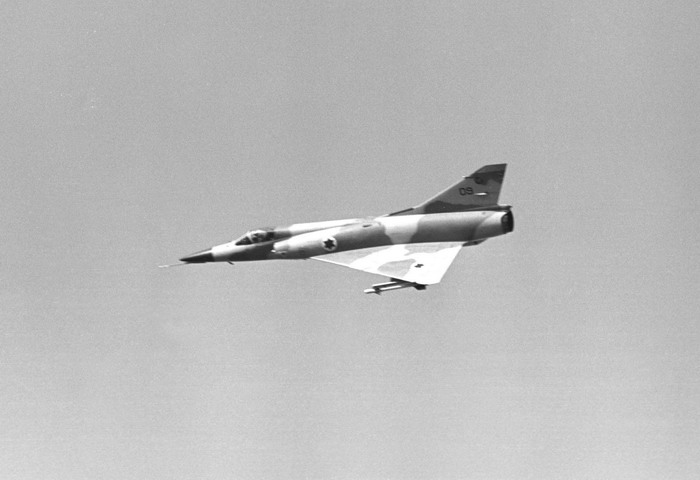On the eve of The Six Days War, France, then Israel’s largest supplier of weapons and technology, imposed an embargo on the selling of weapons to Israel. This was a major problem for the Israeli army in general, and the Israeli Air Force (IAF) in particular. At the time, France supplied Israel with advanced weapons and technology, while other countries, such as England, Canada and the United States settled for selling outdated weapons if anything. Among the items that were affected were 50 Mirage V fighter jets, that Israel helped design, and already ordered and paid for. The IAF’s need only grew more a few days later, in the aftermath of the Six Days War and the beginning of what later be named the War of Attrition, where Israel lost more than 45 crafts.

The IAI Nesher during the Yom Kippur War
In an operation that much of its details remain obscure, Israel managed to obtain the Mirage V blueprints (some say through a Swiss agent working at the company that fabricated the engines for the Mirage V1), and using French spare parts (that were not included in the embargo), cooperation with several foreign factories, a wink and a nod of the French regime, and plenty of work and Israeli technology, the Israeli Aerospace Industries (the IAI) built its first fighter jet, the IAI Nesher (Hebrew for “vulture”), in early 1971. The Neshers were extensively used during the Yom Kippur War of 1973, where they managed to shoot down 111 enemy jets. Later, they were gradually replaced until they were decommissioned in 1978. Some of those jets were then fixed up and sold to the Argentinian Air Force.
Israel continued with its efforts, and attempted to replace the engine of the Nesher with a different one designed by General Electric, that Israel has fabricated with a license. As a result, by 1975 Israel introduced its newest fighter jet – the IAI Kfir (Hebrew for “baby lion”). The Kfir featured technological improvements and better maneuverability and was in use by the IAF from 1975 to 1996. Various variants were manufactured, and sold (with American consent) to Columbia, Sri-Lanka, and Ecuador. Some jets were also used by the American army in fighting simulations. The later South-African fighter jet, the Atlas-Cheetah was based on the Kfir.
Israel continued with its efforts and spent great resources on the Lavi Project (Hebrew for “Lion”), and the IAI Nammer (Hebrew for “Tiger”) in the 80s, but despite reaching advanced levels and test flights, these projects were cancelled, and the existing prototypes were scrapped into aluminum bars.
The technological challenges of designing and fabricating an aircraft, let alone a fighter jet, are massive, probably more than I can ever understand. The fact that Israel, a very small state with very limited resources, managed to manufacture hundreds of them (with some cooperation) is nothing short of remarkable.
——
1 The man, Alfred Frauenknecht, was charged and convicted in 1971 for the theft of the Mirage V blueprints. By his own admission, he received $200,000 from Israel. He was sentenced to 4.5 years in jail, and died of a heart attack in 1991 at the age of 64.
For further reading:
- Israel has no comment on stolen Mirage blueprints
- A book reviewing the achievements of the Israeli Intelligence Agencies. The book is also available via Google Books.
Please vote: